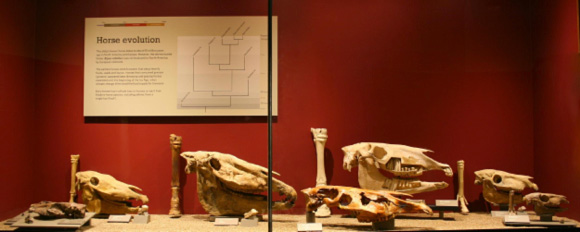Trees are not usually an exhibit on their own, but appear within a specific exhibit, gallery area, and institution. Your tree may be located in a fossil- or evolution-themed gallery. Other trees may appear nearby. If that is the case, it is a good idea to use a consistent approach to tree design throughout your exhibit — and entire institution if possible. Since we know that trees are not transparent representations, but instead require the viewer to unpack them, using the same overall tree design can make this task easier.
Even if your tree is the only one in the institution, it is important to consider how it relates to the rest of the exhibit. You may want to display specimens or live organisms nearby that exemplify the taxa on your tree. If so, try to highlight this connection visually. If specimens or live organisms are not possible, you can include images of the taxa to add interest and pull people in.

Many rights- or royalty-free images of organisms can be found on the following websites:
- Encyclopedia of Life
- Wikimedia Commons
- Science Photo Library
- Science and Photography Through the Microscope
- Flikr’s Creative Commons
- freeimages
Additionally, consider providing supplementary support/explanatory materials to help visitors interpret your tree. For example, you could display a tablet computer nearby that allows visitor to explore the Tree Room’s Primer or Field Guide. Alternatively, live programming or classroom/field trip lesson plans can be made available for interested groups. For inspiration, check out these supplemental materials involving trees from the University of Kansas Natural History Museum:
- Museum Discovery
- Your Natural History
- Shared Characters and Evolutionary Tree
- Evolutionary relationships in the museum and beyond
- Interpreting evolutionary trees
Once your trees are up on display, there are still opportunities to improve them…
